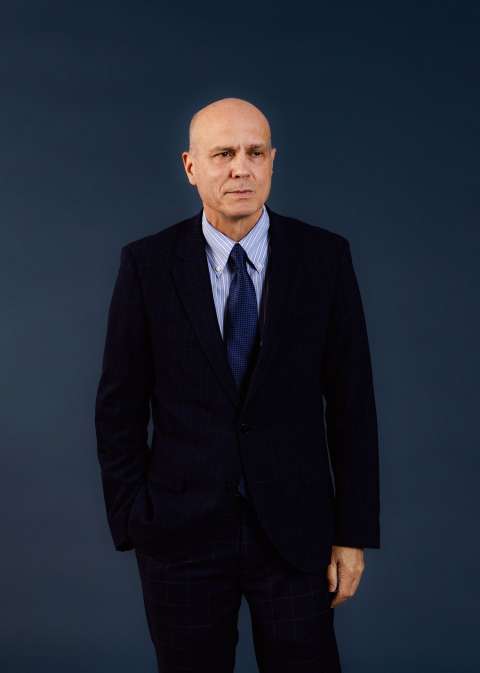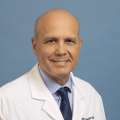In April 2023, UCLA Health and Children’s Hospital of Orange County (CHOC) announced they will team up to create a new regional pediatric congenital heart care program. “Our shared vision is one program offered at two sites to provide patients with the best care in a location close to home,” says Glen S. Van Arsdell, MD, chief of congenital cardiovascular surgery at UCLA Mattel Children’s Hospital and chief of the new UCLA Mattel Children’s Hospital-CHOC Congenital Heart Program. “We will use our considerable clinical strengths, integrate data and technology and provide seamless, convenient access to care.” The long-range goal of the collaboration is to create a program that will become a leading destination for diagnosing and treating the full spectrum of congenital heart disease. “CHOC is very clinically focused, and it is a national leader in patient safety and outcomes. Now we will be collaborating with UCLA, which is perhaps the best research institution in the country,” says Richard N. Gates, MD (RES ’94, FEL ’95), director of cardiothoracic surgery and co-medical director of the CHOC Heart Institute. “Add the two together and this will become a leading program in thought and innovation.” Dr. Van Arsdell and Dr. Gates spoke about the UCLA Mattel Children’s Hospital-CHOC Congenital Heart Program with Mark S. Sklansky, MD, chief of pediatric cardiology at UCLA Mattel Children’s Hospital and founder and medical director of the UCLA Children’s Heart Center.
This is exciting for me to speak with you — this partnership between UCLA Health and CHOC is very exciting for both institutions and for Southern California. Glen, much of the momentum for this alignment has been due to your efforts and your vision. Where did this idea of, in your words, “one program, two sites” come from?
Dr. Glen S. Van Arsdell: One of the most important things in addressing issues in congenital heart disease is scale. That is important because if you have lots of patients, you can improve quality through studying and further understanding of each of the subpopulations within that. Let’s say, for example, you have a population of 10 million, and out of those 10 million, there are 80,000-to-100,000 births. We can predict the number of children born within that population who are going to need heart surgery. It’s not that many, really — maybe 300 to 400. If you can get scale, then you can say, “Let’s develop a team around these larger numbers of patients and make sure that every patient who goes through is a data point for helping us deliver better care for the next child.” The great programs in the world, the ones that really drive thought, that lead quality, that help to design new strategies, are ones that are a little bit bigger and that say, “We are going to learn from every patient.” One program, two sites really is saying that together, we can get to critical scale and do it better.
CHOC and UCLA both are outstanding institutions in their own right, but they also are different in many respects. Richard, do you see challenges, or do you see opportunities, in those differences?
Dr. Richard N. Gates: CHOC is well known nationally for clinical outcomes and patient safety. There is tremendous opportunity in partnering with UCLA, which is one of the top academic research institutions in the country, to spur more research and innovation at CHOC. For UCLA, which also is excellent in clinical care and safety, there is opportunity to benefit from some of things that we do really well in those areas. One of the aspects of this relationship that is very exciting is that it is meant to be a true partnership — not a relationship of a senior partner to a junior partner. With that approach, the plan is to develop incredible faculty quality and leadership in both institutions.

Glen, would you like to add to that?
Dr. Van Arsdell: It’s not to say there won’t potentially be some differences between our two institutions, but we’ll be equal partners in this process. That will be true not just in clinical care, but also on the research side. We’ll build the basic-science research component of our congenital heart endeavors at UCLA because it’s a big research campus, and we’ll build the outcomes and quality research out of the CHOC campus. One will be a leader in thought in quality assurance and outcomes and clinical endeavors, and one will be a leader in thought in science. Both together will magnify our outcomes in all arenas and make this endeavor a world leader. CHOC is an amazing institution, and it has a very strong connection within its community. If we ask how do we make strong stronger, that’s where to look.
There may be naysayers who look at this partnership and see a gulf between the two institutions, in terms of their individual cultures, and they would not bet on its success.
Dr. Gates: Yes, you could look at the programs and say they are somewhat opposite and have different focuses, but opposites attract. We each can build on and enhance the strength of the other. Working together in this way is going to mean so much for our patients and our communities, and, as Glen has said, it will make us global thought leaders in the care of children with congenital heart disease.
Dr. Van Arsdell: I think about this as building a foundation that allows us to compound our quality of care, compound our contributions to knowledge and compound our leadership over time. UCLA and CHOC will be here in a hundred years. We may not win the sprint out of the gate, but at the end of the race, our patients are going to get the best quality of care. Our team is going to be one of the most notable in the world, and because of that we are going to help the care of patients globally. Setting up the right foundation now is key to helping our communities and the betterment of the world 100 years from now.

What do you foresee as the impact on patient outcomes?
Dr. Gates: The answer to that is, I think, pretty simple: We’ve got now twice the number of high-quality physicians working closely together, and that’s going to lead to better outcomes and better consistency in how we care for our patients. When families leave the hospital, they will know that they’re going to continue to receive consistent care over the next dozen or more years through this system that we’ve developed together.
Dr. Van Arsdell: We take care of very complex problems. By joining our two strong institutions together, we double our strength. It is what the late investor and philanthropist Charlie Munger called “the Lollapalooza effect,” where you take greatness, put it together and boom! It explodes into something bigger. By putting our two institutions together, we will get a Lollapalooza effect for the children we treat and their families.
Dr. Gates: It’s exciting for me to think of a partnership in which a premature neonate with cardiovascular disease, an infant with cardiovascular disease, a teen — even an adult with congenital heart disease that’s been treated — can be cared for in one center, with continuity for their entire life. That’s creating a very special center, and that will be very unique.
Have we already started to see this?
Dr. Gates: Yes, I think we’ve seen change already at CHOC. For example, there has been a lot of population growth in the Inland Empire, and patients from there are coming into CHOC, and then some are moving on to UCLA. If you walk into our operating room now as opposed to five years ago, it’s a different place. So is our cardiovascular ICU. At CHOC, we’re already experiencing a difference, and it’s clearly for the better.
Dr. Van Arsdell: I think it’s true at UCLA, too. Our relationship with CHOC has enabled us to reach more of a critical mass and to see even more patients with very complex problems. That means we do a higher volume of procedures, and our team gets more confident. We are able to move forward toward the next generation of how we take care of congenital heart disease. That is the benefit of critical mass, and the benefit to the community that comes from saying we’re going to work together, we’re not going to compete with each other. Ultimately it is the patient who will benefit.
Richard, you mentioned care along the continuum of a patient’s lifetime. Let’s talk more about the role for this partnership in supporting the care of adults with congenital heart disease.
Dr. Gates: For me, one of the most difficult parts of being a physician is to have a patient who crosses that 18-year-old gap — now, it’s effectively 26 with the way insurance works — and then they’re gone and out of your network, and they’re being seen, in many cases, by cardiologists in the community who have specialized in normal adult cardiac care. And they can be really overwhelmed by these patients, and that leads to patients with congenital heart problems not necessarily getting the best possible care. With what we are building together, this center extends to the adult program — and arguably UCLA’s is the best adult congenital program in the country. That means I’ll be able to see my patients into their adulthoods, and that can only be a good thing for the patients.
Dr. Van Arsdell: One thing that seems very odd to say in 2024 is that adults with congenital heart disease still are a very underserved population. Even though UCLA has been the leader and established one of the first, if not the very first, adult congenital programs in the country, this idea persists that once a kid gets operated on, they’re ok and that’s it. Now, of course, we’ve learned that’s not true, but there’s still enough of that floating around that not every patient who has heart surgery or congenital heart disease is followed by an adult congenital specialist. We have to improve our societal responsibilities over time in that regard.
What excites you the most about this partnership?
Dr. Van Arsdell: I believe we’re changing the landscape of congenital cardiac care in Southern California for the better. Together, we are building a culture of greatness. I think building this foundation, the way we’re trying to build it, the culture of greatness will get stronger each year. That is how you make lives for babies with congenital heart disease better. Fundamentally, we have to ask, is there a way that we can eliminate congenital heart disease? You can’t do that anywhere. You can’t do that at CHOC alone. You can’t do that at UCLA alone. But when you bring the greatness of Los Angeles, the greatness of UCLA, the footprint of CHOC and great thinkers together under the umbrella that is associated with the support of a community through philanthropy, we can ask those kinds of fundamental questions. We can make progress on those questions. You can only do that in a few places in the world.
Dr. Gates: There’s a lot of excitement at CHOC right now among our intensive care doctors and our cardiologists and their ability now to communicate with their counterparts at UCLA and to begin to look at how they do things similarly, how they do them differently and how they can work together to do those things better. That’s a very exciting thing for us to see.

